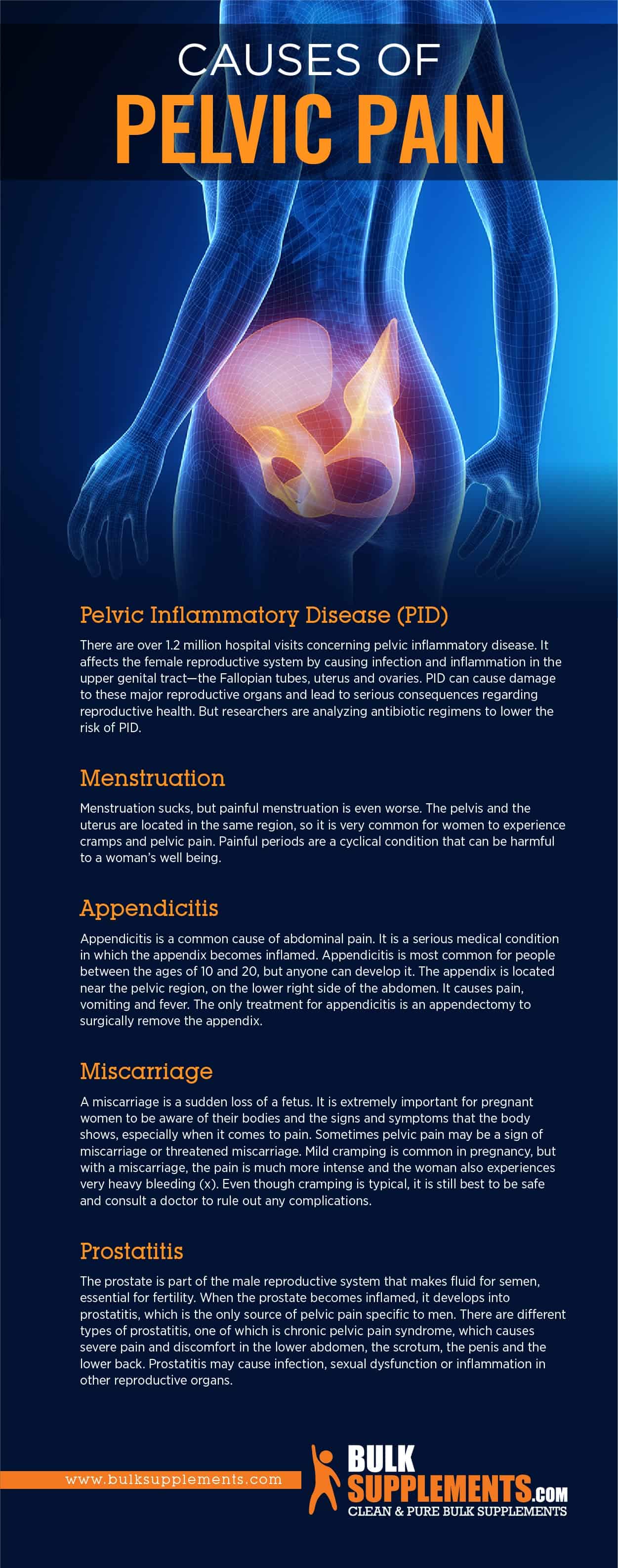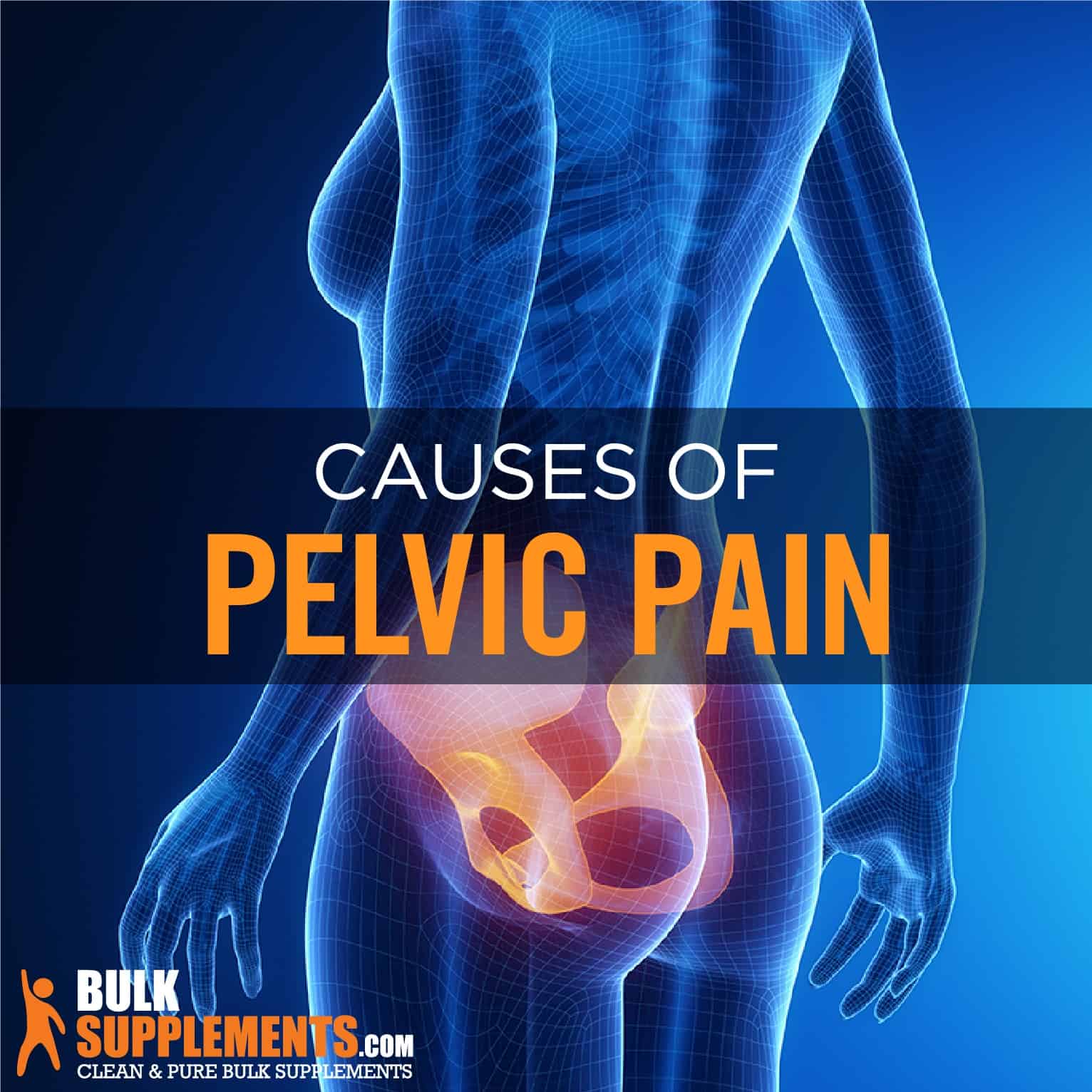What is Pelvic Pain?
Aches and pains are totally normal until they’re not, right? Pelvic pain is a perfect example. Patients feel it in the lowest part of the abdomen. The pain can be dull or sharp and it may be steady or it might come and go. Constant pelvic pain can interfere with daily activities. Pelvic pain is common in women because it is associated their menstrual cycles, but it may also indicate problems with internal organs. In men, pelvic pain is usually caused by prostatitis. Regardless of whether the pain is constant or sporadic, it is important to speak with a doctor about the condition.
It may also indicate problems with the urinary tract, lower intestines, muscles, bones or specifically the appendix. Some common causes include pelvic inflammatory disease, menstruation and appendicitis. In pregnant women, it may also signal a potential miscarriage. However, pelvic pain is a common condition and sometimes there is no identifiable cause. There are natural home remedies to try, such as yoga. Supplements may also help reduce or manage pain, including Vitamin D and willow bark. However, always consult a doctor before adding supplements to a dietary regimen.
Characteristics of Pelvic Pain
Pelvic pain can sometimes be difficult to identify because it may feel different between different individuals. It may be acute, developing suddenly or it may be chronic if it comes or goes or if it lasts a long time. Chronic pain lasts longer than six months and doesn’t go away with treatment (x). On top of that, the pain can also radiate to other parts of the body like the genitals or other organs around the pelvis.
While these are the most common characteristics of pelvic pain, it is important to always listen to the body. There are also distinguishable differences between the symptoms that women feel and the symptoms that men feel. Women may feel pelvic pain before or during the menstrual cycle. It may also cause painful ovulation, painful urination and pain during or after sex. Both men and women may feel bloating, diarrhea or constipation.
Causes of Pelvic Pain
Pelvic Inflammatory Disease (PID)
There are over 1.2 million hospital visits concerning pelvic inflammatory disease. It affects the female reproductive system by causing infection and inflammation in the upper genital tract—the Fallopian tubes, uterus and ovaries. PID can cause damage to these major reproductive organs and lead to serious consequences regarding reproductive health. Researchers are analyzing antibiotic regimens to lower the risk of PID (x).
Menstruation
Menstruation sucks, but painful menstruation is even worse. The pelvis and the uterus are located in the same region, so it is very common for women to experience cramps and pelvic pain (x). Painful periods are a cyclical condition that can be harmful to a woman’s well being (x).
Appendicitis
Appendicitis is a common cause of abdominal pain. It is a serious medical condition in which the appendix becomes inflamed. Appendicitis is most common for people between the ages of 10 and 20, but anyone can develop it. The appendix is located near the pelvic region, on the lower right side of the abdomen. It causes pain, vomiting and fever. The only treatment for appendicitis is an appendectomy to surgically remove the appendix (x).
Miscarriage
A miscarriage is a sudden loss of a fetus. It is extremely important for pregnant women to be aware of their bodies and the signs and symptoms that the body shows, especially when it comes to pain. Sometimes pelvic pain may be a sign of miscarriage or threatened miscarriage. Mild cramping is common in pregnancy, but with a miscarriage, the pain is much more intense and the woman also experiences very heavy bleeding (x). Even though cramping is typical, it is still best to be safe and consult a doctor to rule out any complications.
Prostatitis
The prostate is part of the male reproductive system that makes fluid for semen, essential for fertility. When the prostate becomes inflamed, it develops into prostatitis, which is the only source of pelvic pain specific to men (x). There are different types of prostatitis, one of which is chronic pelvic pain syndrome, which causes severe pain and discomfort in the lower abdomen, the scrotum, the penis and the lower back. Prostatitis may cause infection, sexual dysfunction or inflammation in other reproductive organs (x).
Other Causes
Aside from PID and menstruation, there are other potential factors that can cause pain in the pelvic area (x):
- Cancer
- Endometriosis
- Sexually transmitted infections (STI)
- Hernia
- Kidney stones
- Urinary tract infection (UTI)
- Crohn’s disease (x)
- Irritable bowel syndrome (IBS)
- Food intolerance (x)

Remedies & Treatment for Pelvic Pain
Medication
Although sometimes it is not a serious condition, pelvic pain is pain nonetheless. One way to manage it is over-the-counter medication, such as acetaminophen or ibuprofen. They may also help reduce swelling (x).
Natural Remedies
A warm bath may also help relieve discomfort by increasing blood flow throughout the body, especially to the pelvis. Laying down with the legs elevated can also promote blood flow and a heating pad may relieve pain. Mild exercise can help as well. For example, there are yoga poses that specifically target the pelvic region to relieve stiffness and tension. Strengthening, stretching and relaxing the muscles that cause pelvic pain might help manage it. Yoga is also useful for reducing stress and anxiety (x).
However, over-the-counter medications are not a proper treatment for serious underlying medical conditions that may trigger pelvic pain. Although exercise may help relieve pain, it is still not a bad idea to seek medical treatment. It is best to be safe and consult a physician before using any natural home remedy and make sure to follow all medical advice.
Supplements for Pelvic Pain
Vitamin D3
Vitamin D plays a vital role in musculoskeletal health, including the pelvic area, and it may also help patients manage pain. It may also help reduce inflammation, which can trigger pain in some cases. Studies suggest that supplements may be able to help reduce pain in people with a Vitamin D deficiency. Researchers also claim that there is a correlation between Vitamin D and muscle weakness (x). As a dietary supplement, the recommended dosage for Vitamin D3 is one softgel per day, unless a physician recommends otherwise.
White Willow Bark
Most people recognize white willow bark as a fever reducer. It contains salicin, which was eventually used to make aspirin. White willow bark is centuries old, originating to 400 BC. Chinese and European cultures have used it to relieve aches and pains. But it also has anti inflammatory properties, which may help ease pain. Studies suggest that white willow bark works slower than aspirin does, but its effects may be more long-lasting (x). The recommended dosage for white willow bark extract powder is 400 to 1,600 mg unless a doctor instructs a different dosage.
The Bottom Line
Consider yourself an expert on pelvic pain now? Just hope you don’t become an expert on how painful it can really be. Pelvic pain is exactly what is sounds like: pain in the lowermost part of the abdomen, below the belly button. It can be dull or sharp, constant or intermittent.
Pelvic pain is a very common condition and there are several different causes and conditions that may trigger it. For example, pelvic inflammatory disease, appendicitis, menstruation and prostatitis may cause pain in the pelvic region. It may also be a sign of a potential miscarriage. Some of these underlying conditions are mild, but others may be more severe.
Treatment may include over-the-counter medications, including ibuprofen and acetaminophen. More natural remedies like light exercise, yoga, heating pads and taking a warm bath may help. Supplements like Vitamin D3 and white willow bark extract may also help manage pain. However, supplements and natural remedies are not an acceptable treatment for medical conditions. Always consult a doctor before adding supplements to a dietary regimen or using natural treatments to ease pelvic pain.


